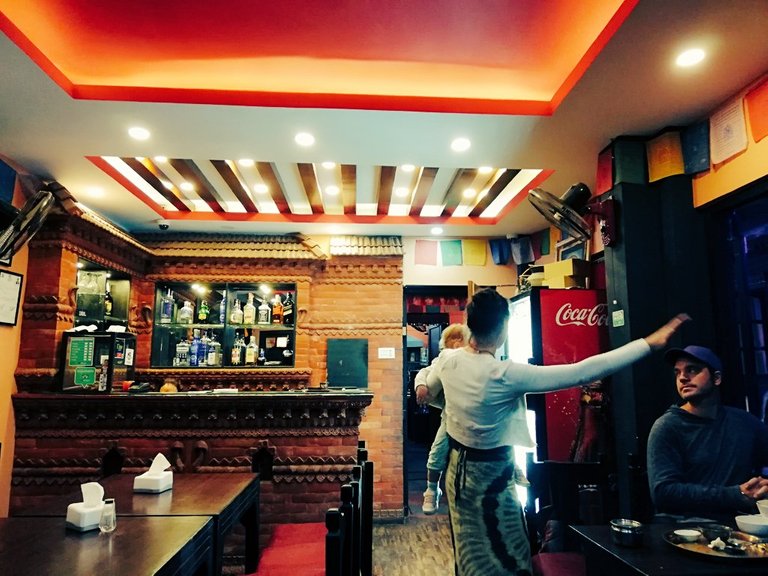
Food is not only a commodity, but it is a way of people's life and their existence.
It is food that makes you feel home. Home is where your heart satisfies your appetite psychologically making you feel at home. Having said that Nepali food holds more meaning to it than to its literal meaning. It holds the cultural and traditional values.
Nepal is a home for different ethnic groups. Each and every groups have their own distinctive language, dress, traditional values and cuisines. Foods are influenced by the place where they reside. In city areas, we can find all the types of foods from Western to Eastern. If you travel to higher altitudes, people eat what they grow with not much of a choice. Mainly, corn, wheat, buckwheat, millet etc. In everyday lunch and dinner, most people eat dhindo, which is thick mush or porridge of millet or buckwheat or corn. It is the staple food of people living in dry areas and it is eaten dipping into soup of lentil or chicken/goat soup along with ghee/butter and side dishes as per taste or availability. It is swallowed without chewing because it is served hot and is sticky; if chewed it sticks all over the teeth.
Dhindo

source
In lowlands, we can find rice, lentils, potatoes, maize, fruits according to the seasons. Wherever you go in Nepal, we can find dal(lentil), bhat(rice), tarkari(vegetables as preferred or found) which is an essential part of diet. It is the staple food of Nepal. Nepalese recipes consists of many spices and herbs used as per its requirements in dishes. And, the most popular condiments are achaar or chutney(relishes or pickles) both used interchangeably.
The popular achaar among us is both white radish preserved in a jar and tomatoes either mashed in a silauta(hand grinder;flat grinding stone with pestle) or electronic grinder. Achaar is prepared several months ahead before consuming it, it is marinated with spices as per taste and is preserved in a jar. Whereas, chutney also chataney is prepared just before a meal and served fresh.
Chutney

source
Silauta; traditional stone for grinding

source
Mula ko achaar;radish pickle
.jpg)
source
Among all the cuisines, undeniable cuisine for me is "thakali khana". Thakali khana is a staple food of thakali people residing at thak khola region of Mustang. It is getting popular among Nepalese people. Thakali khana found in a city may not have the authenticity of typical thakali food but few restaurants here in Kathmandu do provide authentic thakali food to some extent.
My personal favourite so far is Tukuche at Baluwatar and Paleti Bhanchhaghar at JP marg, Thamel. Although they may not have all the varieties of side dishes available in typical thakali, they do serve basic thakali food keeping its authentic value.
Tukuche;Thakali Khana
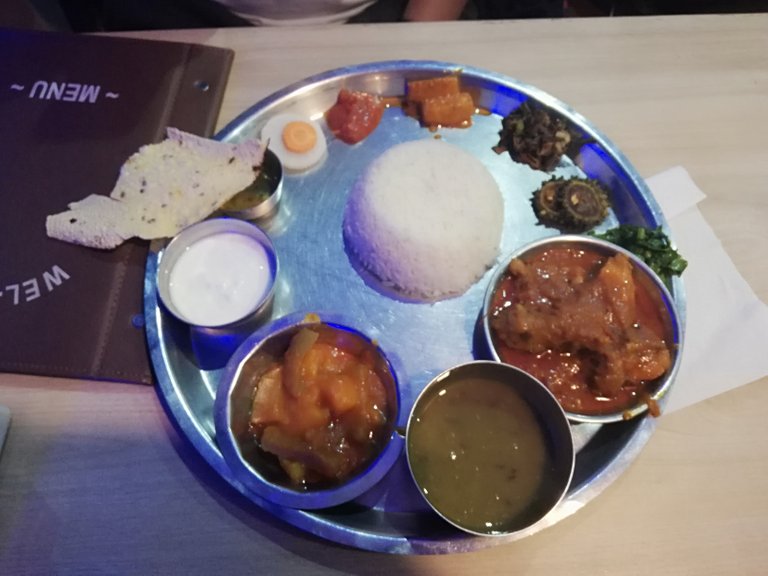
Paleti Bhanchhaghar
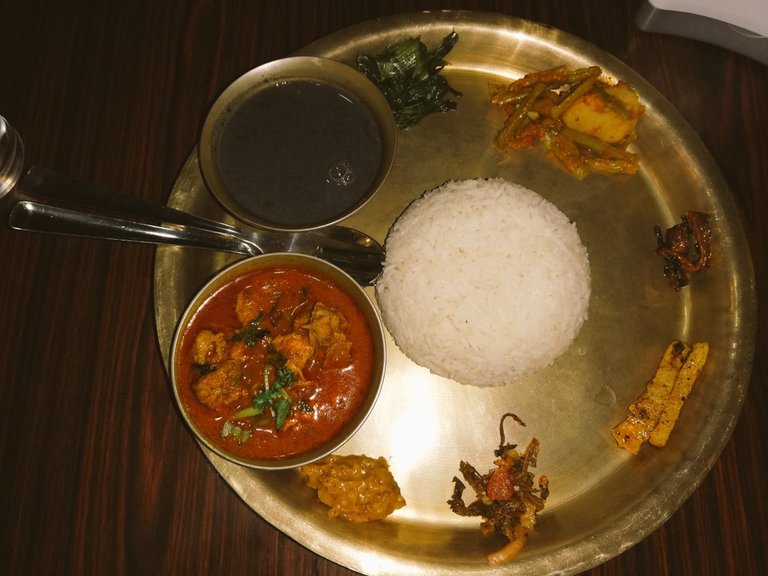
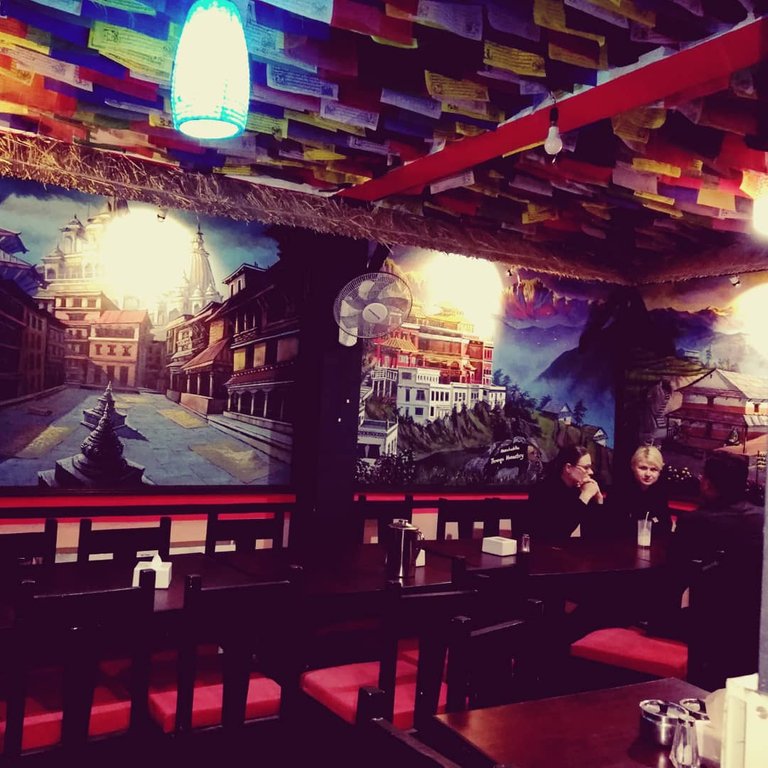
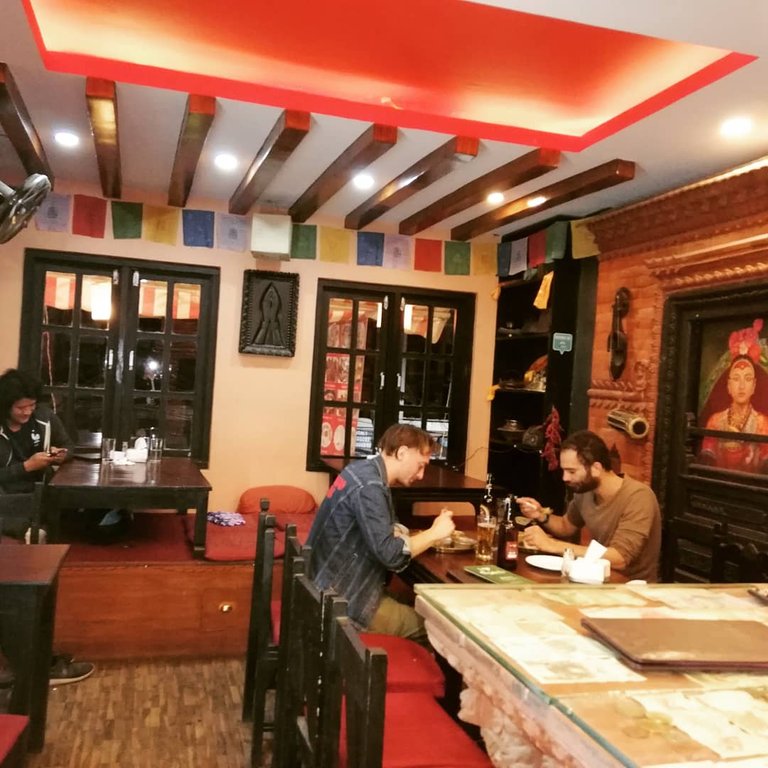
Non-vegetarian can option for either Chicken Thakali Khana or Goat Thakali Khana. Vegetarian can also get veg thakali khana; all the side dishes are same except vegetables are served instead of meat like cauliflower, carrots, peas and green beans(differed as per restaurant).
Basic thakali khana consists of dal(lentil), bhat(rice), chicken/goat meat, spinach, achaar, chutney(radish and tomato relish), fried bitter gourd, gundruk achaar(leafy vegetable fermented, dried and preserved) and vegetables. Few restaurants provide yoghurt as a dessert. Thakali khana is incomplete without ghee/butter.
What I love most about thakali food is its lentil(dal) which is pure black or locally grown beans in Mustang. Flavour of yam and ginger in lentil satisfies my taste palette. For me garlic-ginger taste in meat and lentil is what makes this thakali food finger licking. This aromatic flavorful thakali food is a must-try food in Nepal.
Whenever I eat thakali food I cannot stop myself from refilling my plate. It gives me feeling of fullness. Inevitable love for food is what keeps me going happy in life.
"There are people in the world so hungry, that God cannot appear to them except in the form of bread."
source